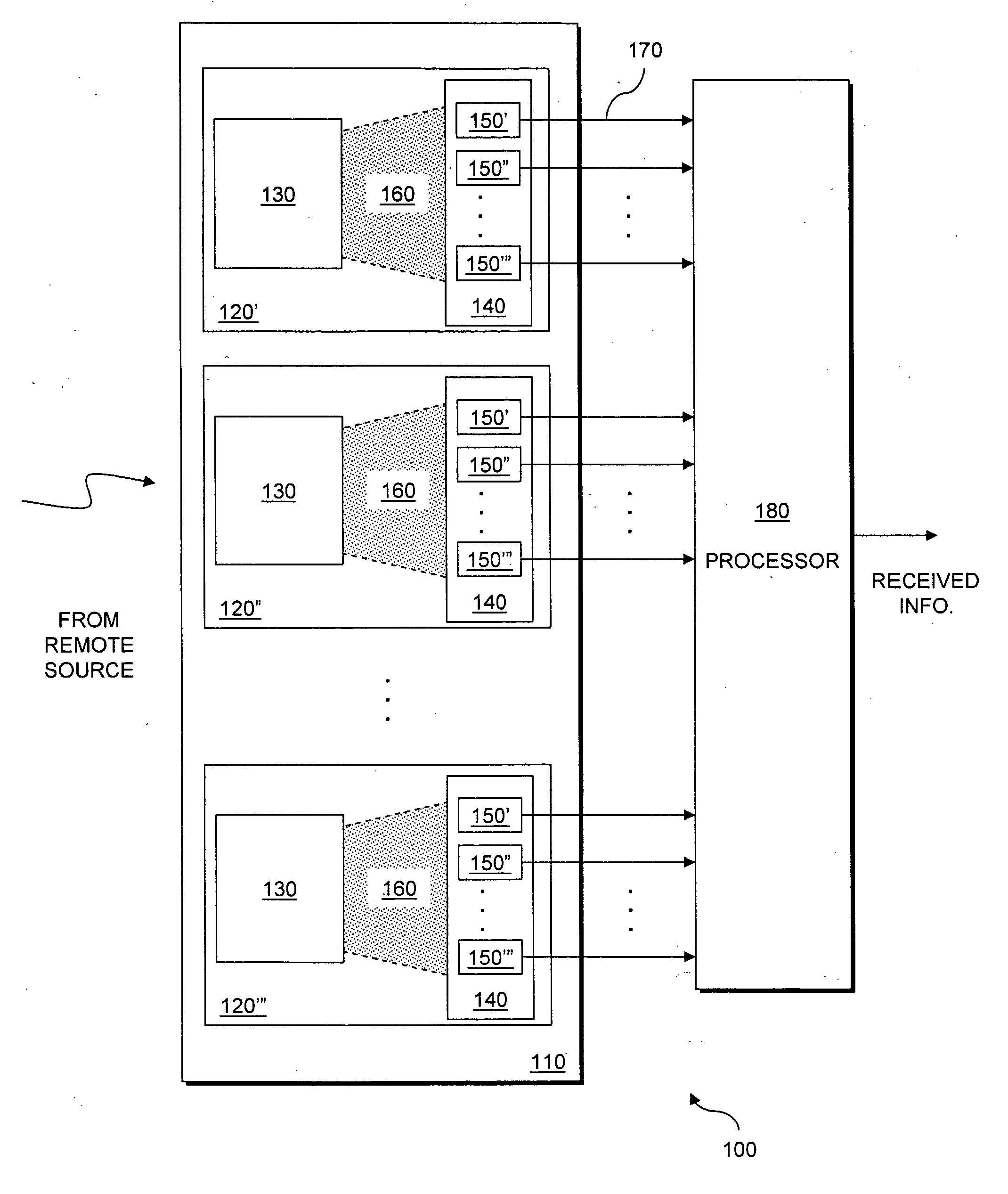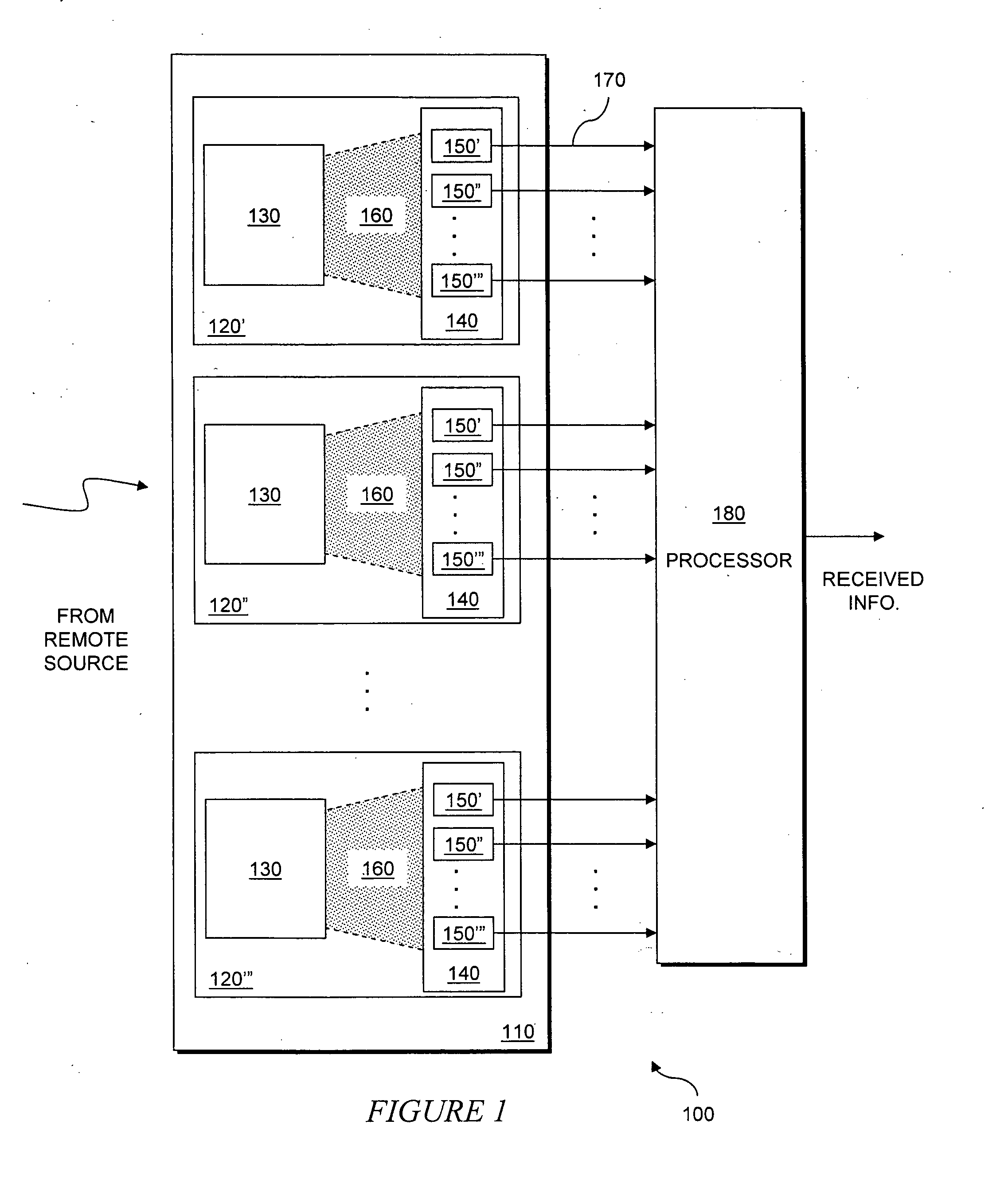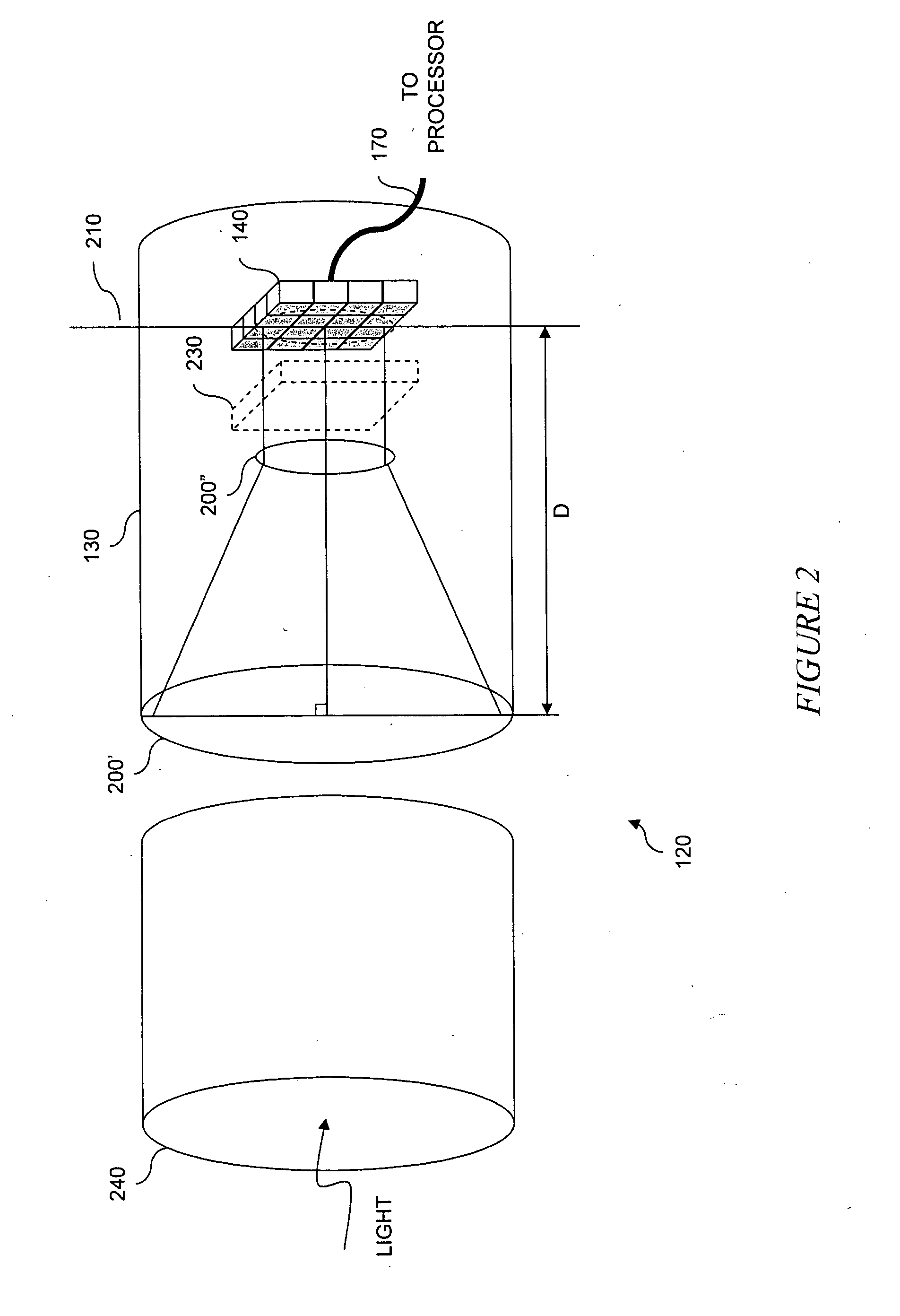Lincoln distributed optical receiver array
a distributed optical receiver and receiver array technology, applied in the direction of electromagnetic transmission, electrical equipment, transmission, etc., can solve the problems of low reception optical power density of some free-space signals, unlikely candidates, cost and complexity of constructing and maintaining such devices, etc., to achieve accurate signal acquisition and tracking, and facilitate operation
- Summary
- Abstract
- Description
- Claims
- Application Information
AI Technical Summary
Benefits of technology
Problems solved by technology
Method used
Image
Examples
Embodiment Construction
[0027] A description of preferred embodiments of the invention follows.
[0028] The present invention provides an array of modestly sized telescopes, each adapted to include an array of photon counting detectors. The resulting array of arrays yields an optical receiver that is well adapted for receiving extremely low power communication signals.
[0029] A schematic representation of an optical communications receiver is illustrated in FIG. 1. The optical communications receiver 100 includes an optical array 110 having a number of spatially-separated optical detectors 120. The optical array 150″, 150′″ (generally 150). The optical system 130 collects a portion of light received from the remote source and directs it toward the light-sensing array 140. A shaded region 160 represents the light directed from the optical system 130 to the light-sensing array 140. Notably, the dimensions of the different components are not necessarily drawn to scale. For example, the optical system 130 may b...
PUM
 Login to View More
Login to View More Abstract
Description
Claims
Application Information
 Login to View More
Login to View More - R&D
- Intellectual Property
- Life Sciences
- Materials
- Tech Scout
- Unparalleled Data Quality
- Higher Quality Content
- 60% Fewer Hallucinations
Browse by: Latest US Patents, China's latest patents, Technical Efficacy Thesaurus, Application Domain, Technology Topic, Popular Technical Reports.
© 2025 PatSnap. All rights reserved.Legal|Privacy policy|Modern Slavery Act Transparency Statement|Sitemap|About US| Contact US: help@patsnap.com



